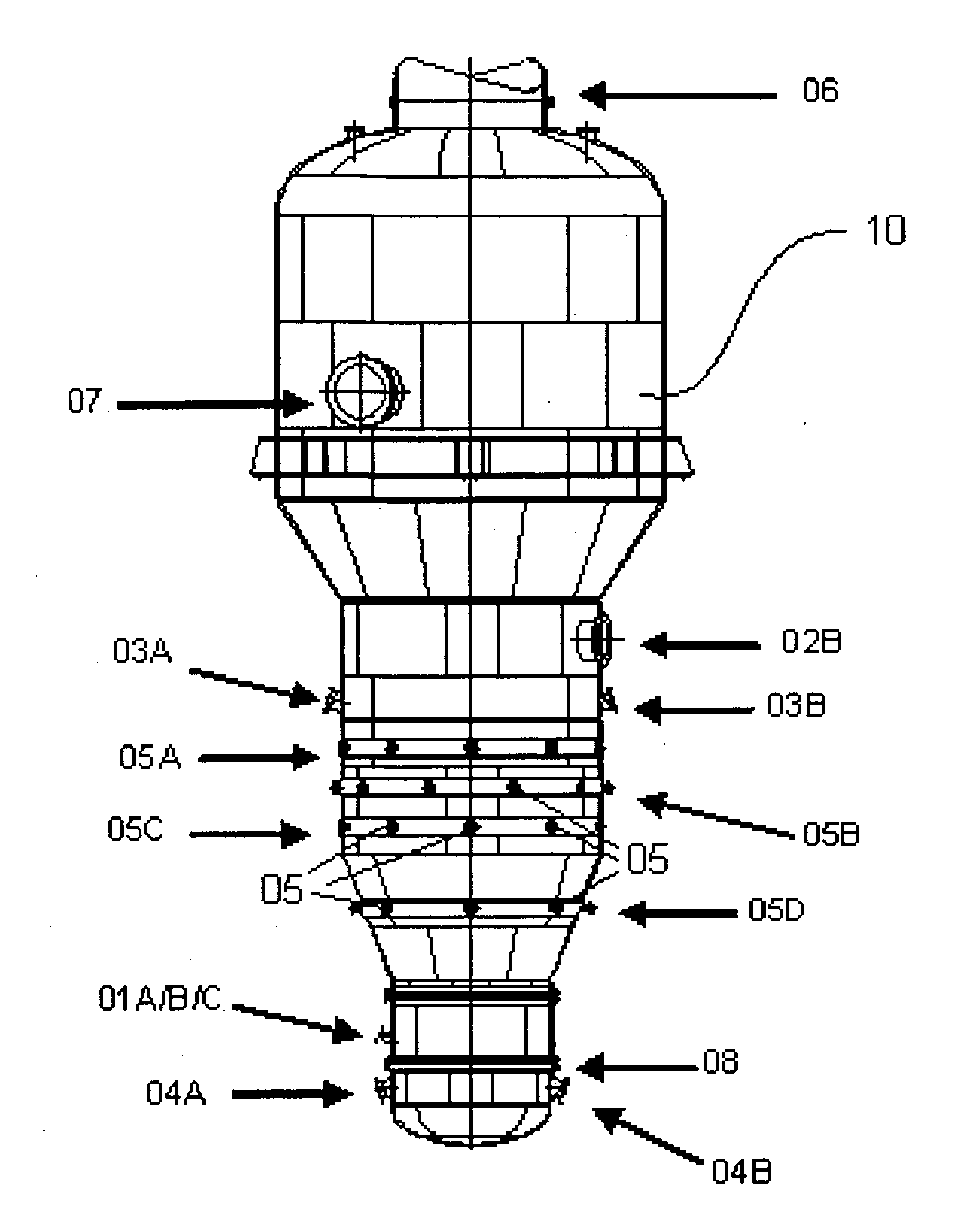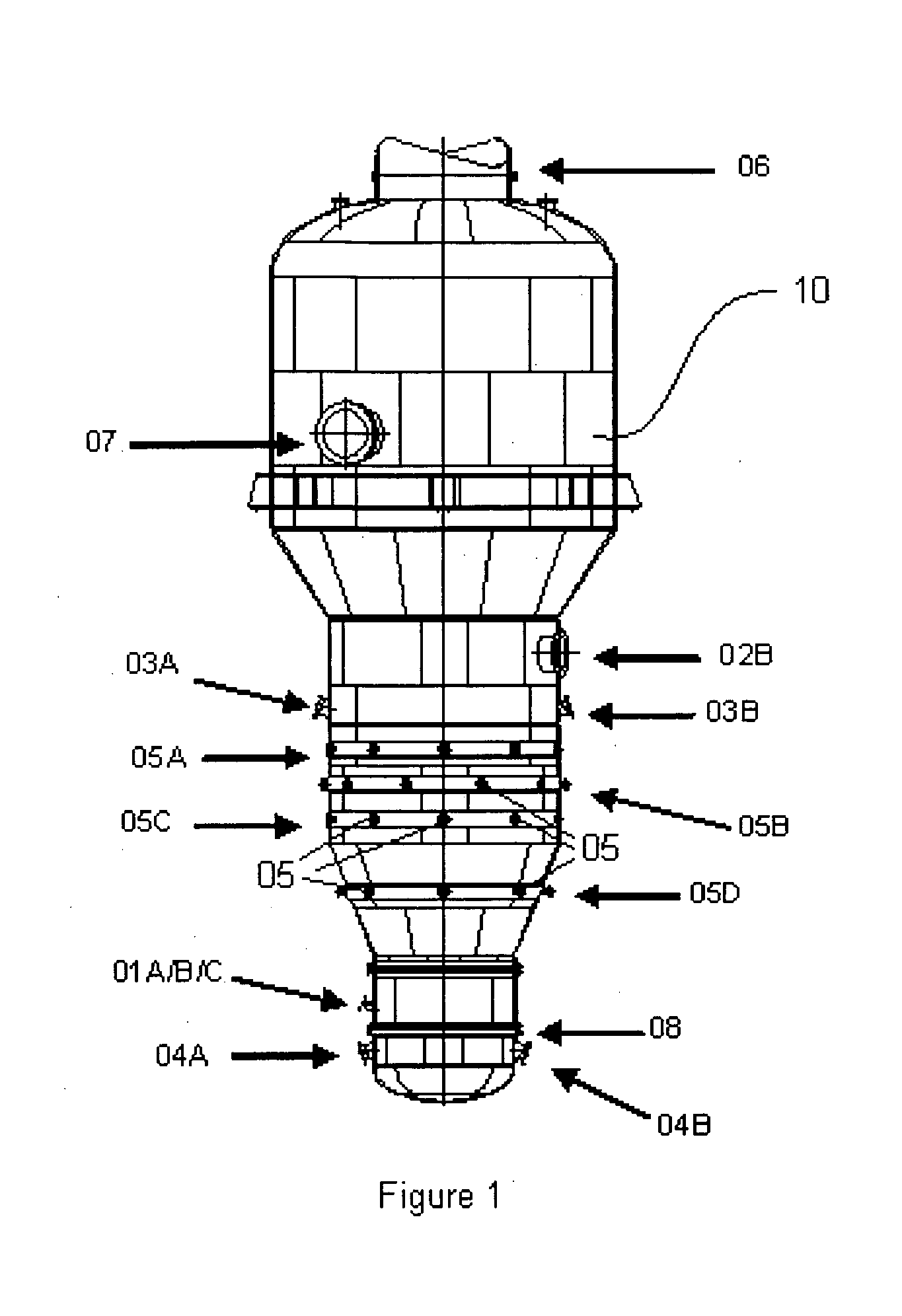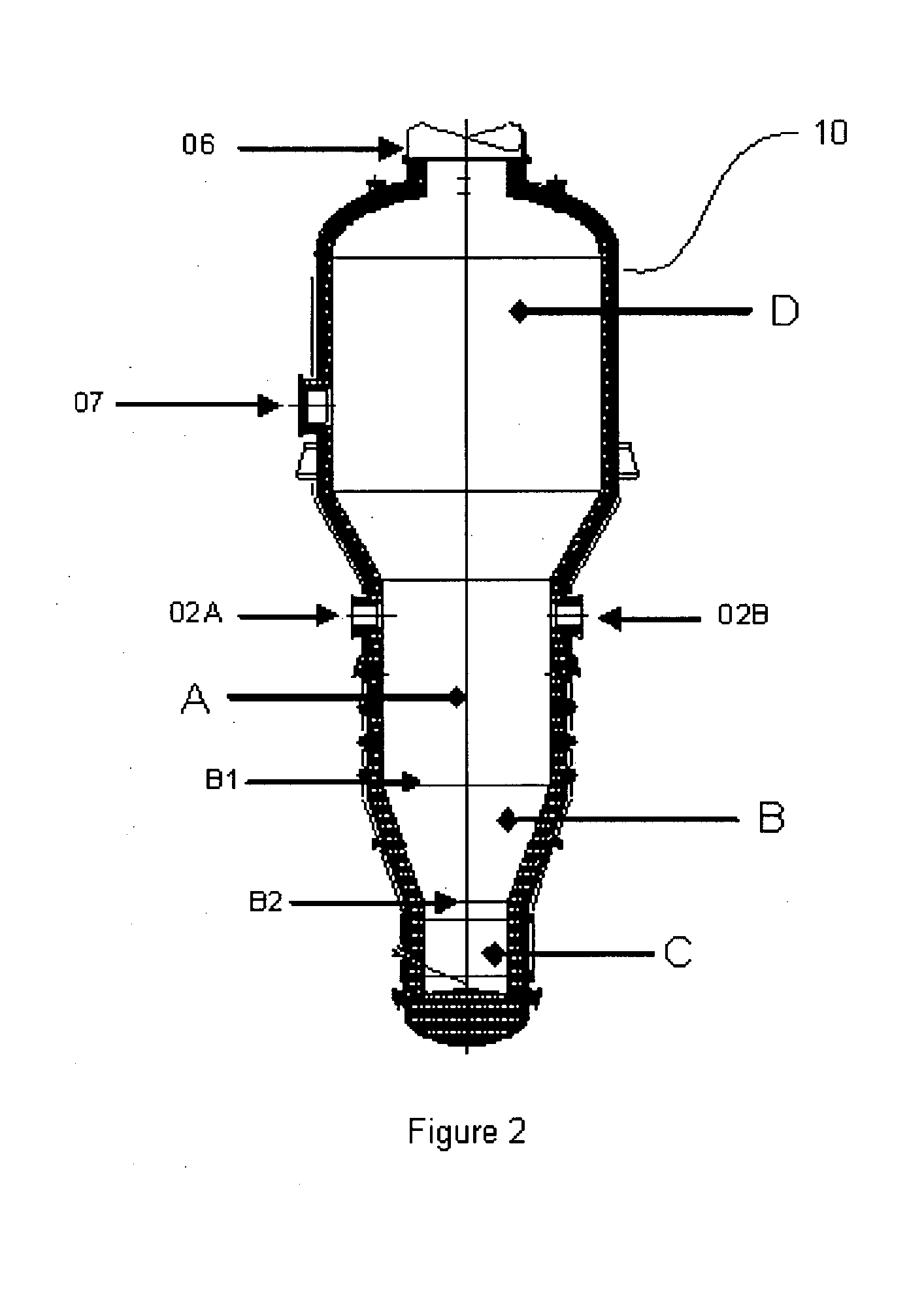Thermal gasification reactor for producing heat energy from waste
a technology of waste heat energy and gasification reactor, which is applied in the direction of gasification process details, combustion process, combustible gas production, etc., can solve the problems of landfills, environmental protection solutions, and requiring space in landfills, and achieve the effect of destroying waste and meliorating the aforementioned disadvantages
- Summary
- Abstract
- Description
- Claims
- Application Information
AI Technical Summary
Benefits of technology
Problems solved by technology
Method used
Image
Examples
Embodiment Construction
[0017]It should be noted that the following detailed description is directed to a thermal reactor for producing heat energy by destroying waste and is not limited to any particular size or configuration but in fact a multitude of sizes and configurations within the general scope of the following description.
[0018]Referring to FIG. 1 and FIG. 2, there is shown a thermal reactor which converts organic and / or inorganic waste to useful products in the form of synthesis gas and inert glass-like mineral aggregate, respectively, both of which are re-cycled as useable products. The reactor includes an elongated vessel (10) having an internal volume, said internal volume comprising an oxidizing zone (C) located at a lower portion of the internal volume, a carbon bed (B) located above the oxidizing zone (C), a gasification zone (A) located above the carbon bed (B), and a gas retention zone (D) located above the gasification zone (A). A carbon bed is located below the gasification zone (A). Th...
PUM
 Login to View More
Login to View More Abstract
Description
Claims
Application Information
 Login to View More
Login to View More - R&D
- Intellectual Property
- Life Sciences
- Materials
- Tech Scout
- Unparalleled Data Quality
- Higher Quality Content
- 60% Fewer Hallucinations
Browse by: Latest US Patents, China's latest patents, Technical Efficacy Thesaurus, Application Domain, Technology Topic, Popular Technical Reports.
© 2025 PatSnap. All rights reserved.Legal|Privacy policy|Modern Slavery Act Transparency Statement|Sitemap|About US| Contact US: help@patsnap.com



